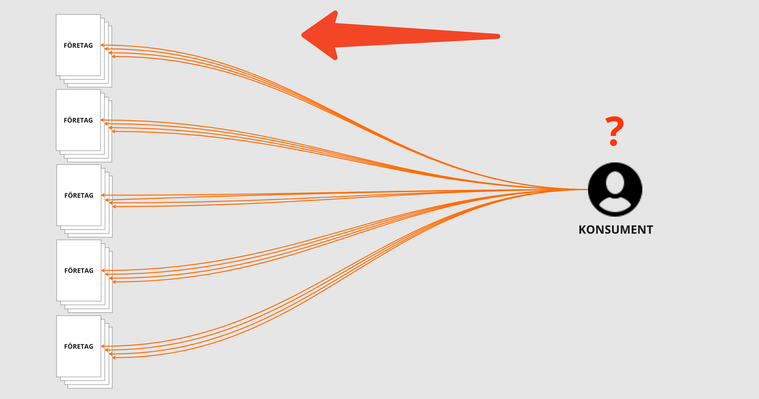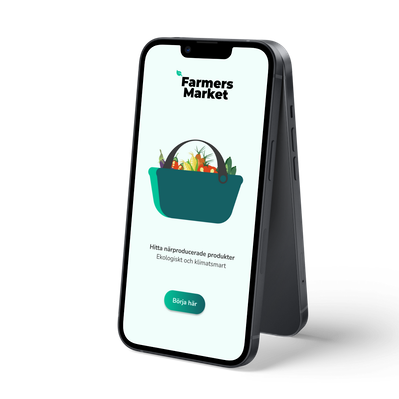BRIGHT
YOUR GO-TO SUSTAINABILITY PLATFORM
Overview
Bright is a case study about a service that enables users/consumers to see
how sustainable a company is through transparency and traceability based on different parameters.
We are in the midst of a climate crisis with clear signs of climate change that are on the verge of becoming irreversible. To stop the negative development and achieve the climate goals, companies need to review their products and services and strive to offer climate-smart solutions that benefit both people and the environment while severely limiting the production of unsustainable products.
Client
Bright (fictional)
Role
Researcher
Analyst
UX Designer
UI Designer
Methods
Research
Benchmarking
Surveys
Sketching
Wireframes
Prototyping
Platform
Mobile
Tools
Miro
Figma
Sketchbook
Google Surveys
Duration
4 weeks
Brief
Create a fictitious service that enables consumers to see how sustainable a company is through total transparency throughout the production chain.
Problem
For many, climate change seems like a distant concept. It's hard to fully understand how it's a threat and what it means for our planet and our lives. While many folks want to make a positive difference, it's often tricky to see how the things we buy and use affect the climate and our environment.
Challenge
Currently, it's not easy to find in-depth info about how environmentally responsible companies and their products are. If you're a discerning consumer who cares about sustainability, you often need to dig deep for independent data to see if companies meet modern eco-standards. This complexity creates hurdles for consumers, making it challenging to gain a clear understanding of companies and their products.
Goal
Research and explore the potential shift of focus from individual consumers to major corporations, holding them accountable for offering more eco-friendly products and services.
Furthermore, the goal is to seek to empower consumers, allowing them to influence companies by making sustainability requests based on transparent information about the production and supply chain.
Process
In this project, I followed the design thinking approach to comprehend the problems and challenges, as well as to identify the needs and expectations of users. This process allowed me to gather a wealth of insights and formulate a concept aimed at addressing the concerns, challenges, and requirements of potential users.
Bench-
marking
Today, there are a number of different services that have the purpose of helping users keep track of their carbon dioxide emissions. Using various tools and features, users can track their climate footprint and be guided to make wise and more sustainable choices in their everyday lives.
Status analysis
In other words, these services focus on the responsibility of the user/consumer. While this is a good starting point, these services leave room for potential missed opportunities. What is partially or completely missing today are clear functions and tools dedicated to creating traceability and more transparency.
Research & data
During the initial phase of the project, I conducted interviews with a total of five participants. 3 of 5 interviewees use today a sustainability app in one way or another. Results from the interviews show that those who currently use or have recently discovered the services and functions inside the applications experience that the information is in many cases difficult to understand. Users also experience difficulties in understanding which products and services are most sustainable before they make a decision to purchase.
I also conducted survey with 104 participants to gather further insights understand behavior, expectations and identifying other problems challenges.
84.5%
Of participants cares if a product is sustainably produced through the production chain.
83.6%
Of participants answered that sustainably produced products is always or/and often most crucial info before purchasing.
65%
Of participants thinks it's very difficult to understand which products are sustainably produced.
70%
Of participants answered that the biggest obstacle to purchase sustainably produced products is price followed by lack of information about sustainability.
"It is often difficult to find information about how a product is produced."
-Roque
"Other apps offer similar approaches, but these put the responsibility mostly on me as a consumer."
-Sara
"I often think about how sustainable a product is before I buy it."
-Lorans
HMW's
HMW make information and data about a product available and create transparency and traceability throughout the production chain?
HMW make it easier and support the consumer/user to find sustainably produced goods?
HMW make producers, suppliers and companies to realize the value of meeting the consumer's sustainability expectations and requirements?
Concept blueprint
After conducting a thorough research and analysis that included competitive analysis of similar existing services, qualitative and quantitative research, I have now gathered enough insights to generate a concept.
Solution
An independent platform, with the working name Bright, which, with the help of audits, calculations, reports, requirements, legislation and certifications, collects data from producers, companies and suppliers and makes this available in the form of a sustainability declaration. The concept makes it easier for users to see which companies are most sustainable and puts the responsibility on the companies and the power in the hands of the user/consumer. With Bright, all data from the entire production chain connected to products and services is gathered on a single platform.
Certification
Data from companies and organizations is made available on the platform. Companies that meet sustainability requirements and goals receive an environmental and fair trade label that they can use on their products and services.
Status
When a company is listed on the platform, all data from the production and supply chain is connected in the platform's system. This also enables to track how the company continues to develop and comply by regularly scanning through the company's data and activity to update its sustainability status.
Declaration
When a company chooses to be connected to the platform, the service will conduct a review of the company's products and services. When the audit is complete, the company is verified and receives a sustainability stamp (if it meets the requirements) and is listed with a sustainability declaration.
Endorsement
Users on the platform can search for a specific item using a search function or through different categories. The user receives a list of recommended products and services that meet the sustainability requirements.
Sitemap
Further on, I sketched a rough concepts of a sitemap. The sitemap functions as a guid through how the platform could be structured and with the most important functions and sits that need to be developed and sketched further. The sitemap helps to visualize how the user would experience the service and meet their needs and goals.
Wireframes
After developing a basic structure for the platform's structure and navigation, it was time to sketch on wireframes to visualise the basic design for the platform. The focus here is on content and functionality and takes into account the user's needs and expectations.
High-fidelity prototype & functionality
The original wireframes could alone be used to communicate the content and features of the platform on their own, but to further clarify how the platform could look in real life, I develop a high-fidelity prototype. The prototype will also serve as a crucial function for usability testing, iteration and gather new insights.
Landing page with introduction
Upon entering the application, users encounter an engaging first page featuring concise and compelling text that elucidates the platform's capabilities. Users are presented with the option to either join or sign in to create an account. Additionally, the initial slide showcases a curated list of recommended companies that meet stringent sustainability requirements, underscoring our commitment to eco-conscious choices.
Effortless barcode scanning
The platform offers a seamless and efficient barcode scanning function, enabling users to swiftly access comprehensive sustainability data for registered products. This feature is designed to enhance the user's experience by providing immediate insights into the ecological impact of scanned items.
Product information display
Upon conducting a search or scanning a product, users are presented with an informative card displaying details about the product and the associated company. This function empowers users to access a comprehensive sustainability declaration for the product, presented on a scale ranging from 1 to 5. The scale provides clear indications of the product's environmental impact, ranging from highly positive (indicated by a low green number) to less favorable (signified by a higher red number).
Company profile exploration
When users delve deeper into a company's profile, they are greeted with a comprehensive declaration that offers a nuanced view of the company's performance over time. This section provides in-depth insights into various facets of sustainability, including details on different scales of reports and the sources of data. Users can access a wealth of information that aids in forming a comprehensive understanding of the company's commitment to sustainable practices.
Reflections & takeaways
Throughout the project, I realized that there is a clear relationship between demand for sustainably produced products and that consumers find it difficult to see which products are sustainable. Although there are several services offering transparency through the supply chain, It's still overall an unmet need for consumers. Here are some key reflections and takeaways from the project:
Growing demand for sustainability
The project recognizes the increasing consumer demand for sustainably produced products. It is heartening to see that there is a strong interest among consumers to make environmentally responsible choices. This reflects the growing awareness of climate change and the need for sustainable solutions.
Responsibility of companies
"Bright" places the responsibility on companies to provide transparency and traceability in their production and supply chain. This is a significant shift in accountability, moving from consumers alone to the companies that manufacture and supply the products. Companies are increasingly being urged to meet sustainability goals and requirements.
Leveraging data and technology
The project highlights the potential of data and technology in making sustainability assessments more accessible. By collecting and presenting data in a sustainability declaration, "Bright" empowers consumers with the information they need to make eco-conscious choices.
Identifying unmet needs
The project identifies the unmet need for transparent information on product sustainability. Despite existing services, it's clear that consumers still face challenges in obtaining clear, comprehensible, and readily accessible information about the products they buy.
In conclusion, the project recognizes the urgent need for greater transparency and traceability in the sustainability of products and services. By shifting the responsibility to companies and leveraging technology to empower consumers, it seeks to bridge a critical gap in the market. The high consumer demand for sustainably produced products underlines the importance of such initiatives in addressing the climate crisis and fostering a more sustainable future.













